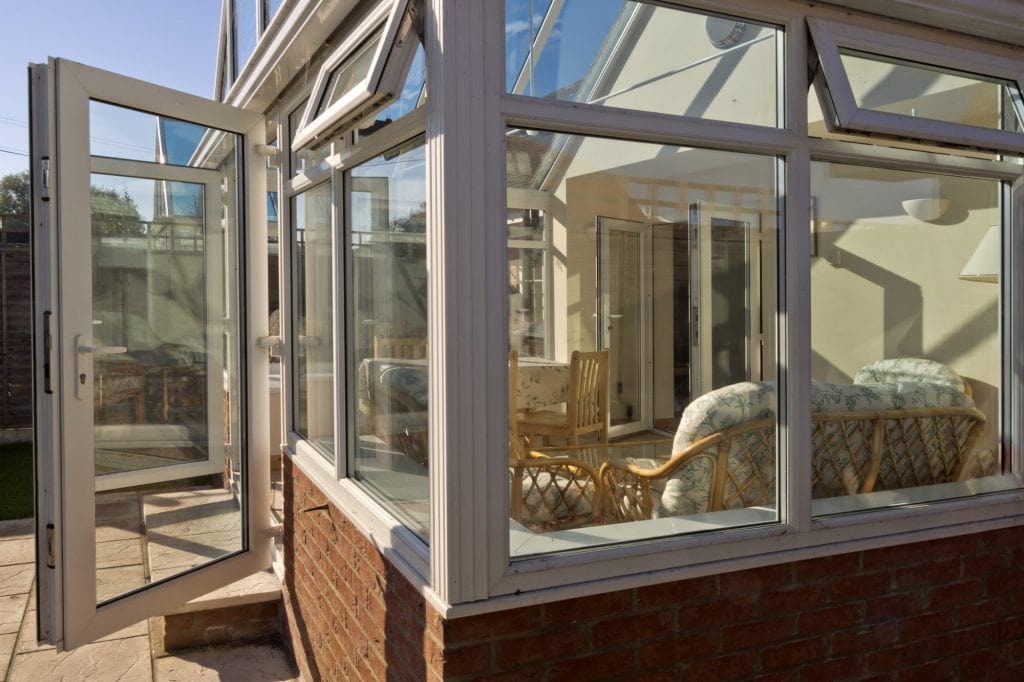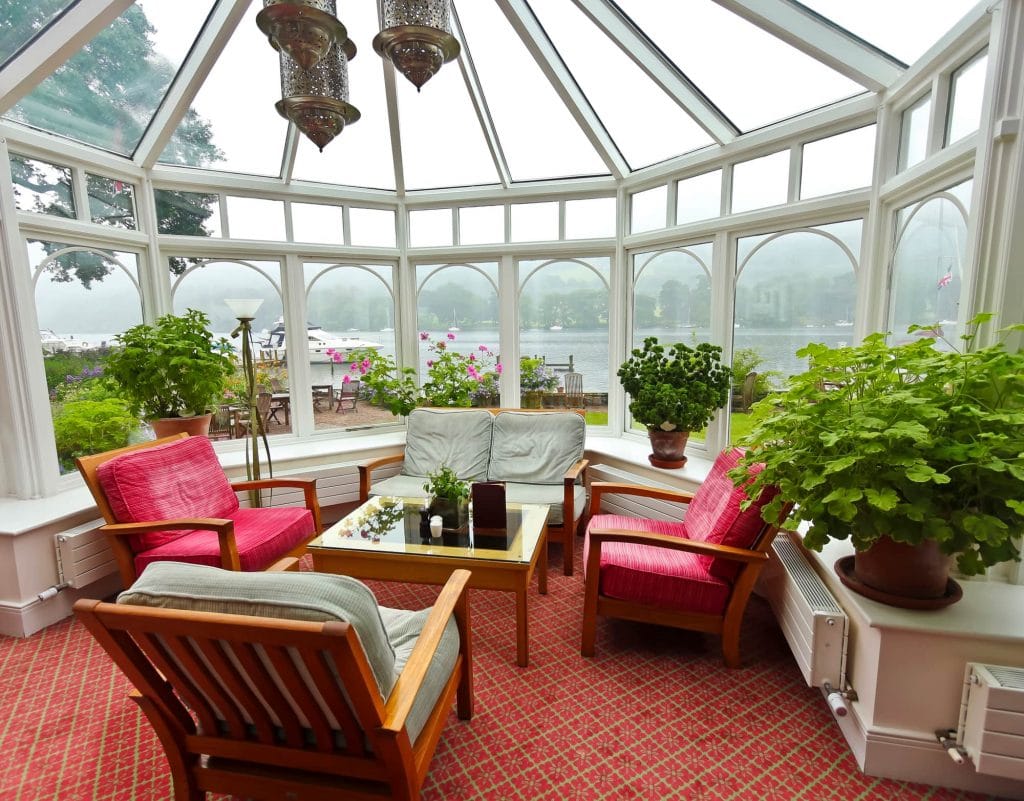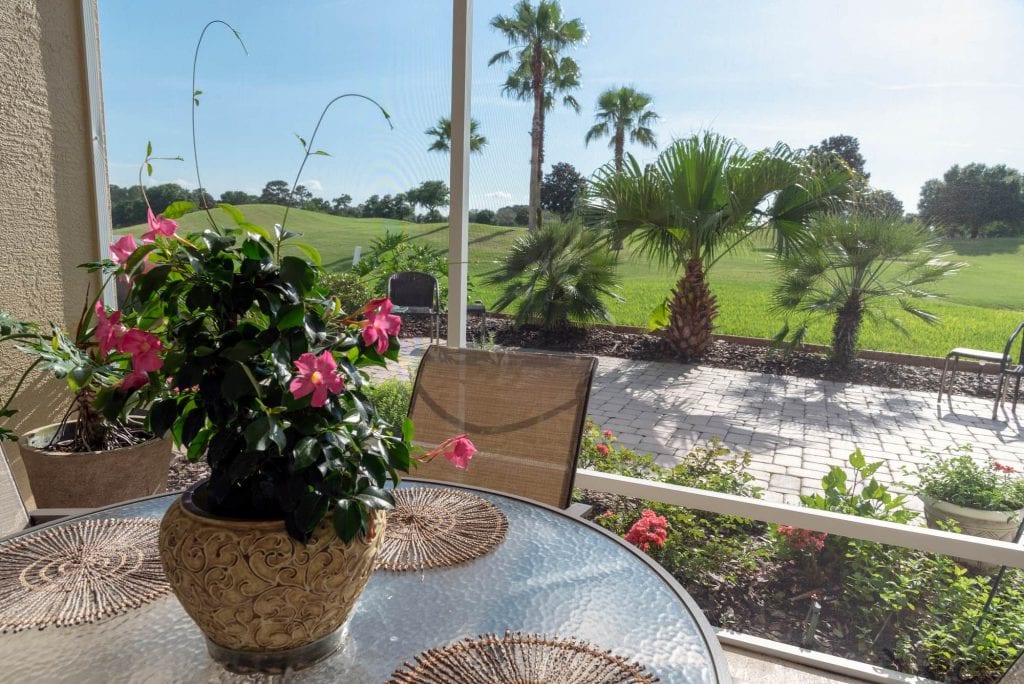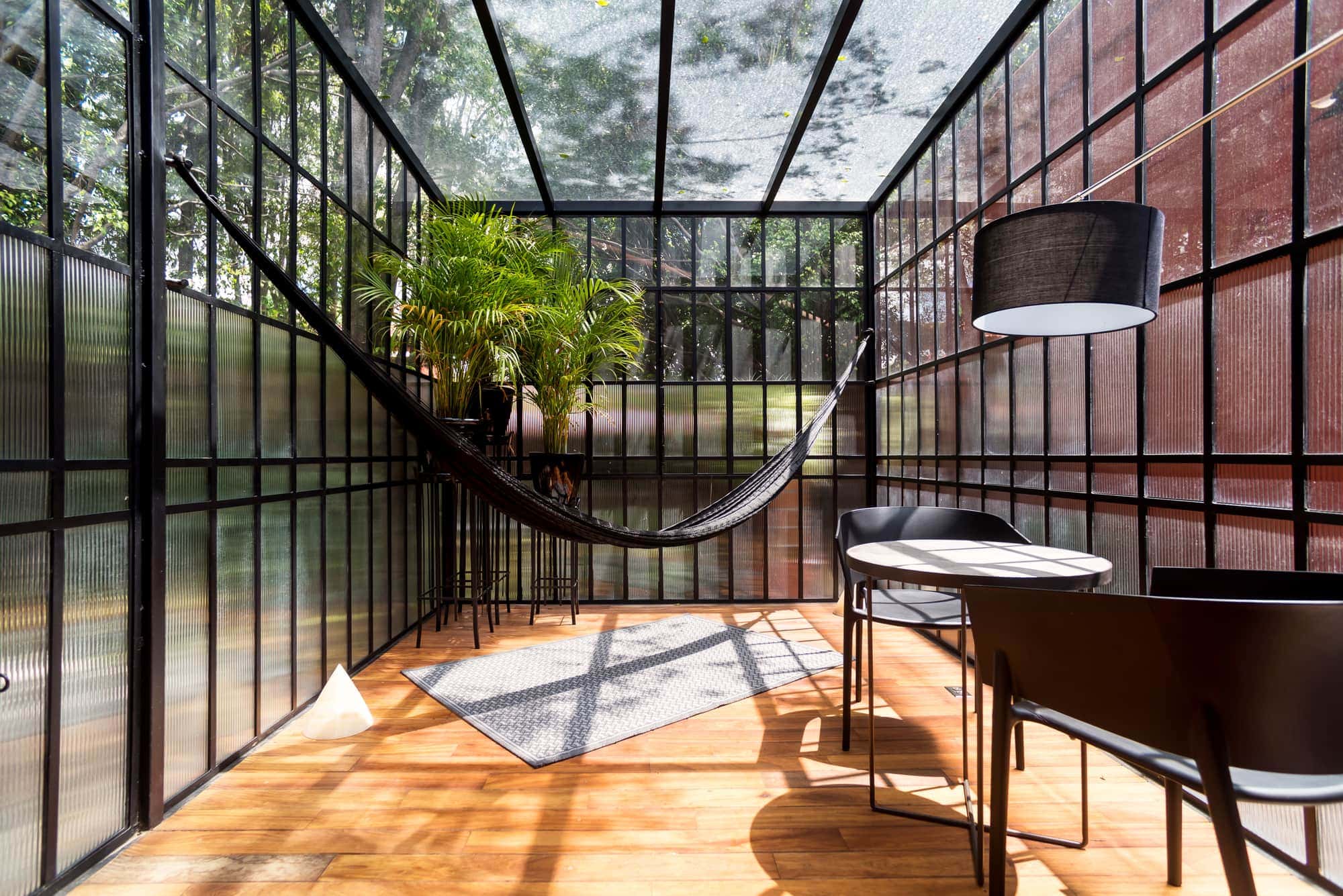If you’re curious about what a solarium is, this article has the answers for you. We will explore various aspects of solariums, including their purpose, differences between solariums, sunrooms, and Florida rooms, and factors contributing to their costs.
Additionally, we’ll delve into how solariums function within apartment settings and uncover the origin behind their name. Looking for a property with a captivating solarium? Look no further!
What Is a Solarium?

A solarium is a room that lets in abundant natural light, typically featuring glass walls and glass roof. The term “solarium” comes from the Latin and means “a place that receives sunlight.” This architectural feature has been around for centuries, dating back to ancient Roman times when people used these spaces as greenhouses or winter gardens.
Today, solariums are popular home additions as additional living spaces that offer various uses and benefits.
- Glass walls and roof: A solarium’s most defining characteristic is its extensive use of glass (double-pane insulated glass) on the walls and roof. This design allows maximum sunlight exposure while still protecting from weather elements.
- Natural light: With all that glass, it’s no surprise that one of the main appeals of a solarium is the ample amount of natural light it provides. This can help reduce energy costs by minimizing artificial lighting usage during daylight hours.
- Ventilation: Many modern solarium designs include operable windows or vents to provide fresh air circulation while maintaining climate control within the space.
- Durability: High-quality materials such as high-performance glass or tempered safety glass and aluminum framing ensure your solarium will withstand harsh weather conditions over time.
Solariums are handy for the following:
- Growing plants and flowers: The abundant sunlight makes solariums ideal for growing a winter garden with various plants, flowers, and even small trees. This environment can create a lush indoor garden that adds beauty to your home and improves air quality.
- Indoor-outdoor extra living space: Solariums provide the perfect blend of indoor comfort with outdoor ambiance. They’re great for enjoying nature without worrying about bugs or weather conditions.
- Relaxation and entertainment: A solarium can serve as a serene retreat where you can unwind after a long day or entertain guests in style and with unobstructed views.
For those thinking of incorporating a solarium into their abode, it is vital to collaborate with proficient specialists familiar with the local construction ordinances.
What Is a Sunroom?

A sunroom is a type of room designed to let in an abundance of sunlight and provide a warm, comfortable space with glass walls and a roof. It can be made with other materials too, including polycarbonate, or other transparent materials. This architectural feature has become increasingly popular among homeowners due to its versatility and the numerous benefits it offers. Characteristics of sunrooms include the following.
- Natural light: The primary purpose of sunrooms is to maximize natural light exposure by incorporating large windows or glass walls that allow direct sunlight to flood into the room.
- Temperature control: Many modern sunrooms are equipped with insulation materials and energy-efficient windows that help maintain optimal temperature levels throughout different seasons.
- Versatility: Due to their design features, sunrooms can be used for multiple purposes depending on personal preferences and needs.
Sunrooms offer several practical applications for homeowners looking to expand their living spaces while enjoying nature’s beauty from within. Some common uses include:
- Indoor-outdoor living space: Sunrooms bridge the gap between indoor comfort and outdoor enjoyment by providing an area where you can relax or entertain guests while being surrounded by picturesque views outside.
- Growing plants: If you have a green thumb but lack sufficient outdoor gardening space or live in regions with harsh weather conditions, then using your sunroom as a greenhouse may be ideal for nurturing plants all year round.
- Hobby room: Transform your sunroom into a creative space for hobbies such as painting, writing, or yoga by taking advantage of the natural light and serene ambiance.
- Home office: Create a productive workspace with plenty of sunlight to boost mood and focus while working from home.
What Is a Florida Room?

A Florida room, also known as a sun porch or lanai, is an enclosed patio designed specifically for the warm climate of Florida and other southern states. This type of room typically features screened walls to provide insect protection while still allowing for an indoor-outdoor living experience.
The primary objective of a Florida room is to create an environment where one can bask in natural light and the breeze without having to worry about insects or extreme weather.
Common characteristics of a Florida room include:
- Screened walls: Unlike traditional sunrooms with an all-glass structure, Florida rooms often have screened walls that allow fresh air in while keeping insects out.
- Ceiling fans: To keep the area cool during hot summer days, ceiling fans are commonly installed in these spaces.
- Durable flooring: Since this type of room may be exposed to moisture from rain or humidity, it’s essential to choose flooring materials like tile or concrete that can withstand such conditions.
- Furniture: Outdoor furniture made from materials like wicker, teak wood, or aluminum is ideal for furnishing your Florida room since they’re resistant to damage caused by sunlight and humidity.
Key Takeaways
When considering the addition of a solarium, sunroom, or Florida room to your home, it’s essential to understand their differences and purposes. These unique spaces can provide various benefits depending on your needs and location.
If you’re in the hunt for a property with one of these features to soak up the sunshine all year round, do a custom property search so you don’t miss out on any opportunities. You can also look for open houses this weekend.
To make the most informed decision about which option best suits your home, contacting a local eXp agent can provide valuable insights into what will work best based on factors like climate conditions and specific property features.
Frequently Asked Questions: What’s a Solarium
The following are some common questions about what is a solarium.
What is the purpose of a solarium?
A solarium is commonly a freestanding, all-glass structure that serves various purposes, making it an attractive addition to any home. It can function as a space for relaxation and entertainment and even provide health benefits. Below are some of the primary reasons why homeowners choose to add a solarium to their property:
- Indoor-outdoor living space
- Gardening and greenhouse use
- Relaxation and entertainment area
- Mental health benefits
- Energy efficiency
What is the difference between a solarium and a sunroom?
A solarium typically features glass walls and roof panels, allowing for maximum sunlight exposure while protecting from external elements. This design creates an indoor greenhouse effect ideal for growing plants or creating a relaxing retreat.
On the other hand, sunrooms often have more traditional construction materials like insulated glass windows and solid roofs with skylights or large windows to let in ample sunlight.
What is a solarium in an apartment?
A solarium in an apartment provides residents with all the benefits of a traditional solarium. It may resemble a closed balcony, allowing the residents to enjoy the pleasant atmosphere provided by natural light.
Why is it called a solarium?
The term “solarium” originates from the Latin word solaris, which means “of or relating to the sun.” A solarium allows homeowners to enjoy natural light, warmth, and scenic views while remaining protected from external elements such as wind, rain, and insects.
Historically, solariums have been used in different cultures across time. For instance, ancient Romans built structures known as solar architecture, where they utilized sunlight for heating purposes during cold seasons.
What kind of room is a solarium?
The primary characteristic of a solarium is its glass walls and roof, which allow for maximum natural light to enter the space. The glass walls and roof of a solarium provide not only an attractive aesthetic but also confer numerous advantages concerning energy efficiency, air quality within the room, and general well-being.
How much does it cost to install a solarium?
If you’re dreaming about adding a solarium to your home, the answer is not black and white. It depends on several factors such as the size of the desired solarium, the materials used, and any specific customization you want.
On average, a solarium can cost anywhere from $30,000 to $75,000. Adding a solarium to your home in warm-weather areas such as Florida or Georgia can add value to your home and provide a gorgeous and relaxing space to enjoy the sunlight every day of the year.
Is a solarium more expensive than a sunroom?
The cost of a solarium or a sunroom can vary depending on various factors such as size, materials used, location, and additional features. Generally speaking, solariums tend to be more expensive than sunrooms.
Are solariums banned?
Today, there are no federal laws banning solarium construction in residential properties. However, some local building codes prohibit them due to safety concerns such as fire hazards or lack of structural integrity during extreme weather conditions like hurricanes or earthquakes. If you’re looking for a property with this feature make sure you discuss your wants and needs with a professional agent so they can check the local building codes for you.





